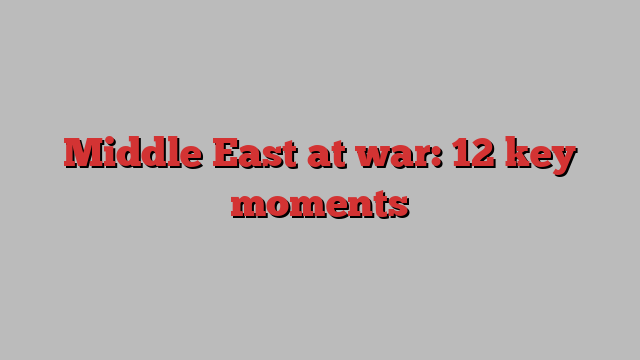
The 12 key moments that escalated conflict in the Middle East
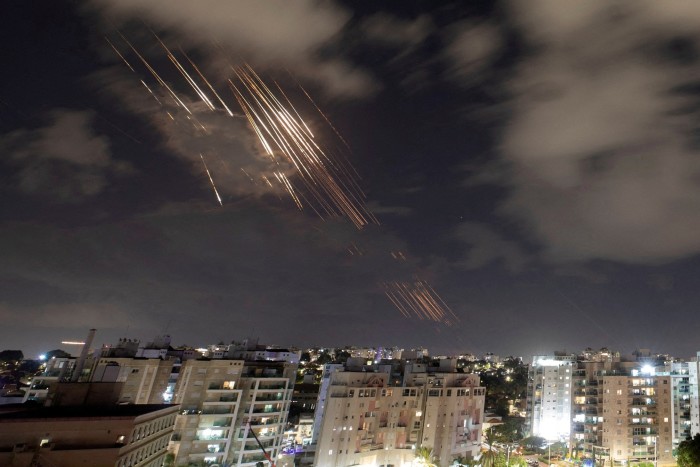
July 28: Gaza ceasefire talks hit deadlock
The US, Qatar and Egypt met Israeli spy chief David Barnea in Rome optimistic that they were on the cusp of a breakthrough to seal a deal to secure a ceasefire and the release of hostages in Gaza. That was also deemed critical to ending the Israeli-Hizbollah conflict. But Israel introduced new demands, and the talks have been deadlocked since.
July 30: ISRAEL KILLS Hizbollah’s military chief
Israel assassinated Fuad Shukr, Hizbollah’s military chief and trusted confidante of Hassan Nasrallah, the group’s leader, in a strike on the southern suburbs of Beirut. It was the first time Israel targeted a Hizbollah leader in the Lebanese capital since the conflict erupted on October 8, marking a significant escalation.
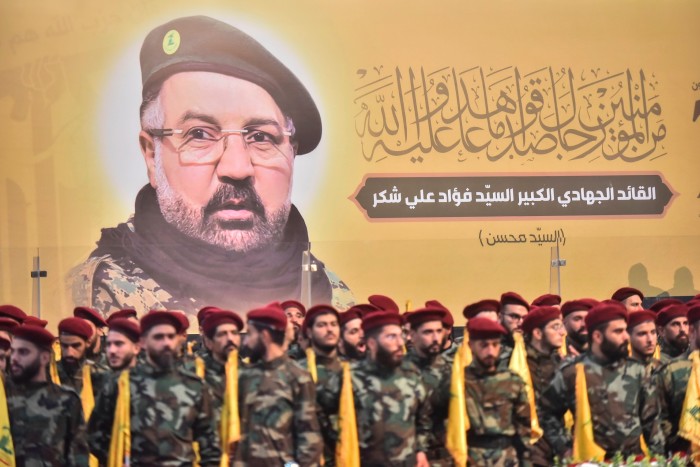
JULY 31: hamas’s ISMAIL HANIYEH ASSASSINATED
Hamas’s political leader Ismail Haniyeh was killed in an explosion at the residence where he was staying in the Iranian capital, in an attack that Iran blamed on Israel. Supreme leader Ayatollah Ali Khamenei threatened “severe punishment” for the killing, which came as a blow to talks on a ceasefire-for-hostages deal in Gaza — Haniyeh was Hamas’s main negotiator.
September 1: SIX HOSTAGES FOUND DEAD IN GAZA
Israeli forces recovered the bodies of six hostages killed by Hamas in Gaza, sparking outrage in Israel. Hundreds of thousands of people took to the streets to protest against Israeli Prime Minister Benjamin Netanyahu and his far-right government, urging their leaders to accept a ceasefire deal with Hamas to free the remaining hostages.
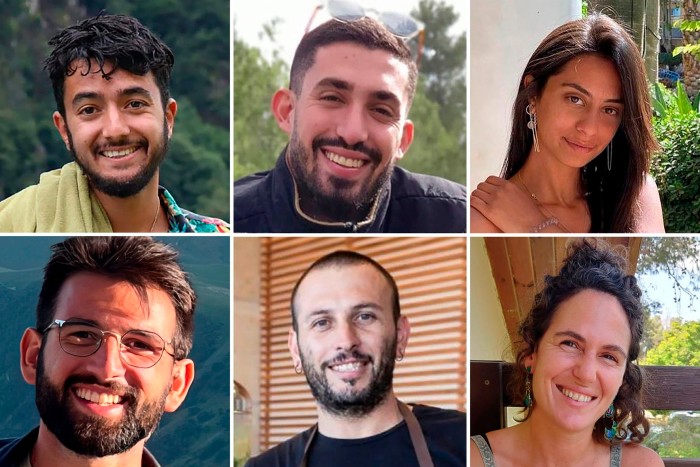
September 17: Pager attack IN LEBANON AND SYRIA
Thousands of pagers detonated across Lebanon as devices that Hizbollah used to avoid surveillance were transformed into weapons. Twelve people were killed and more than 2,000 wounded in the Israeli sabotage attack that struck at the heart of Hizbollah’s communication network. UN human rights chief Volker Türk condemned the assault for its impact on civilians.
SeptEMBER 18: Walkie-Talkie attack
Handheld radios used by Hizbollah exploded in a second day of electronic device detonations, killing at least 25 and injuring more than 600. The back-to-back assaults on the communication devices shocked Lebanon and triggered fear and panic across the country.
SEPTEMBER 19: ISRAEL STEPS UP BOMBING IN LEBANON
Israeli defence minister Yoav Gallant said Israel was at the “start of a new phase in the war” with Hizbollah as it shifted its focus from its conflict against Hamas in Gaza to the northern front. “The ‘centre of gravity’ is moving northward — resources and forces are being allocated [to this front],” he said.
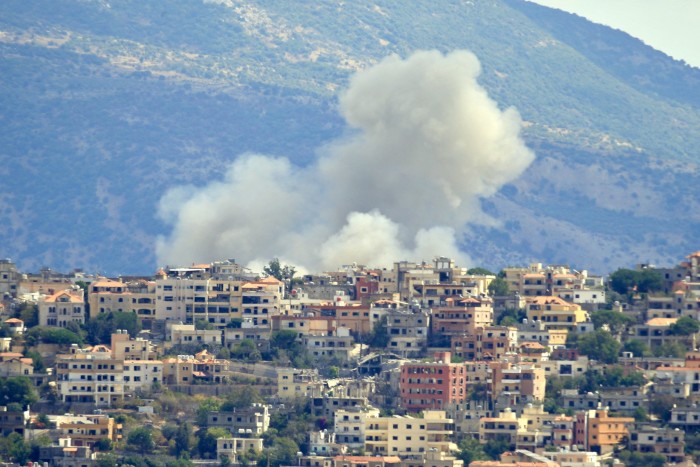
SEPTEMBER 20: ASSASSINATION OF Ibrahim Aqil
An Israeli air strike on Beirut’s southern suburbs killed senior Hizbollah commander Ibrahim Aqil, the founder of its group’s Radwan Force, as well as other members of the elite unit. The Israeli military said it killed the “senior chain of command” of the Radwan, which is responsible for incursions into Israel and defending southern Lebanon against a ground invasion.
SEPTEMBER 25: HIZBOLLAH TARGETS tel aviv
Hizbollah fires a missile at Tel Aviv, Israel’s commercial capital, for the first time. It was one of the militant group’s deepest strikes into Israel since it began firing across the border the day after Hamas’s October 7 attack. The missile was intercepted by Israel’s air defences.
SEPTEMBER 27: KILLING OF hassan NASRALLAH
Israel launches a wave of strikes in the southern suburbs of Beirut, killing Hassan Nasrallah, the cleric who had led Hizbollah for more than three decades and was one of Iran’s closest allies. A senior member of Iran’s elite Revolutionary Guards was also killed, as the Israeli bombs flattened at least six residential buildings.
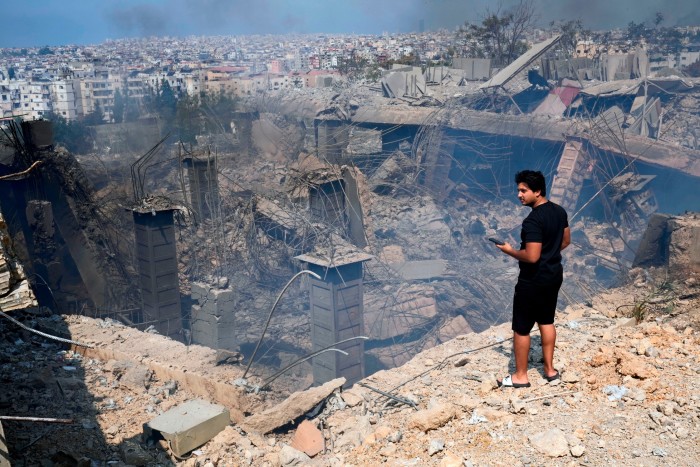
OCTOBER 1: ISRAEL ANNOUNCES GROUND OFFENSIVE in Lebanon
Israel’s military said it had begun entering southern Lebanon and ordered people to evacuate from almost 30 towns and villages there. It then called up four more reserve brigades for “operational missions” against Hizbollah.
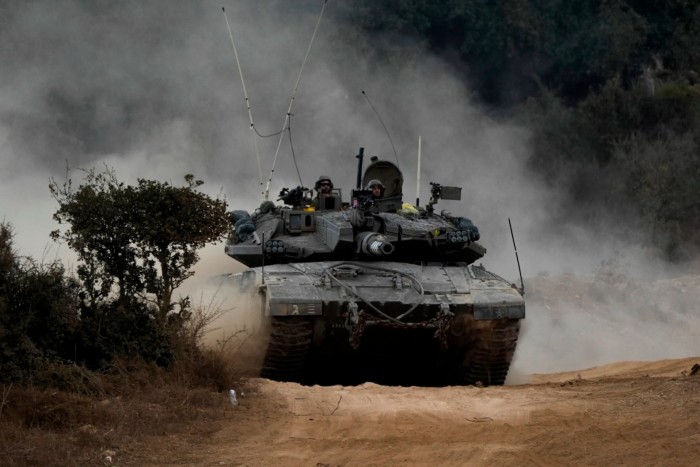
OCTOBER 1: IRAN LAUNCHES MISSILE BARRAGE at israel
Iran fires about 180 ballistic missiles at Israel, targeting military and intelligence facilities in Tel Aviv and around the country. Most of the barrage is intercepted. Tehran said the attack was to avenge the assassination of Nasrallah and a senior guards commander in Beirut, as well as Haniyeh.